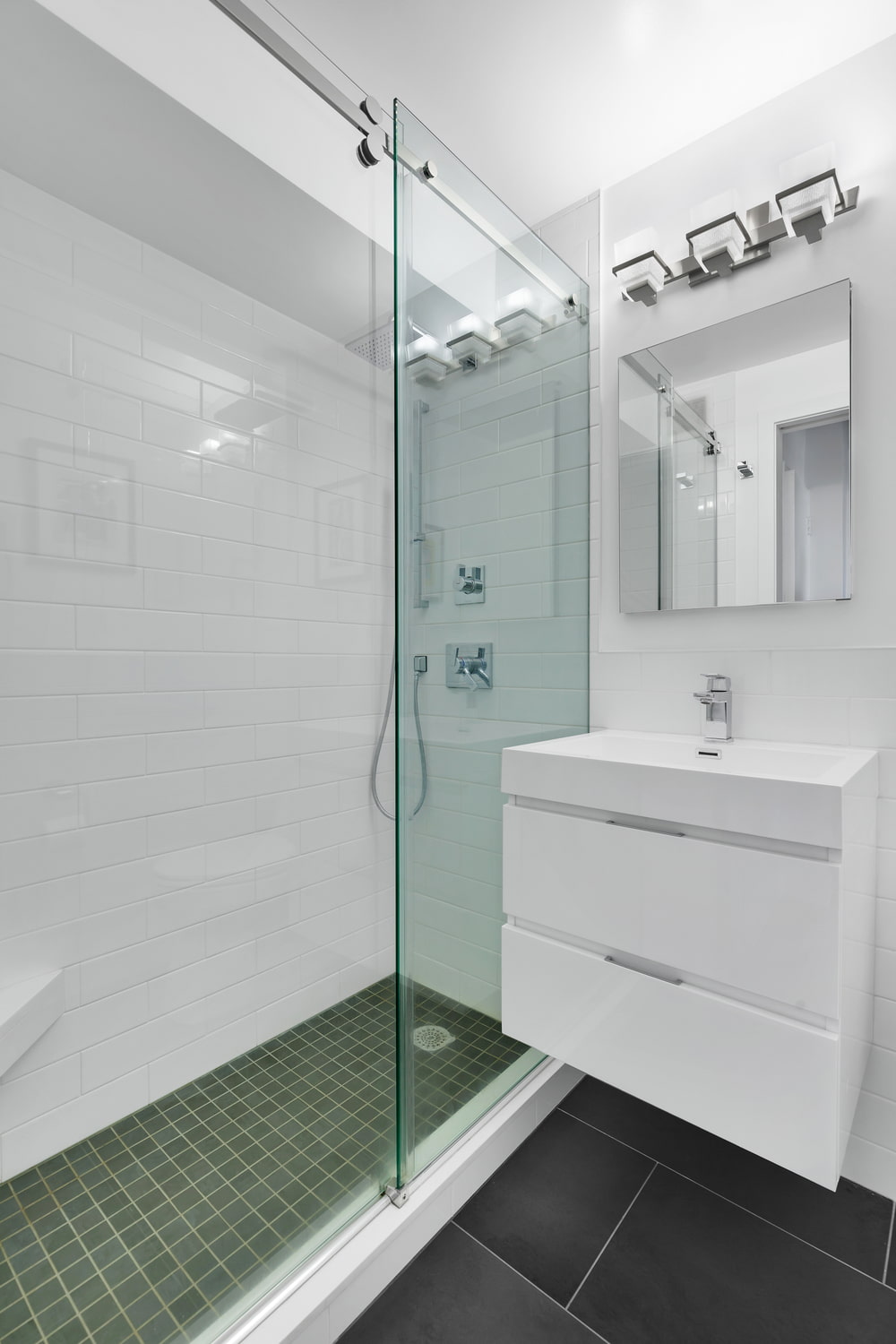Construction & Management Of A Full Apartment Renovation in NYC

NYC RENOVATION GUIDE: CONSTRUCTION & PROJECT MANAGEMENT
This article at a glance:
Once the design is approved, then comes the build. After we’ve laid out the design from start to finish and made all material selections, the project has to be approved by the building. (Unless, of course, it’s a private residence.) After that process is finalized, we can finally begin construction on your apartment renovation.
Plans & Proposals

Before the construction phase of a NYC apartment renovation can begin, the project must be approved by the building board and management company. (If architectural plans are required, those plans also have to separately be approved by the Department of Buildings and the Landmarks Preservation Commission if it is a landmarked property.)
A set of all the documents relevant to your renovation, known as an alteration packet, must be submitted to the building board. When you work with a full-service design-build firm like Gallery, we’ll compile all this information and submit it to the board on your behalf.
There are two types of these packets: with or without architectural plans. Both include the following:
- Signed alteration agreement
- Check payable to the managing company that is specified in the alteration agreement
- Copy of the actual executed contract that contains the full scope of the project
- Separate scopes for plumbing, electrical, and carpentry and construction
- All certificates of insurance, meaning all the parties that could be named as additionally insured, as spelled out in the AA
- All licenses for the electrician, plumber, and contractors
- Often: the electrical load letter, written by our electrician to state the apartment’s current capacity and whether or not an upgrade will be required
- Often: an asbestos test is required
If your NYC apartment renovation includes architectural plans, the packet will contain all of the above plus the architectural plans, which themselves include things like plumbing elevations, electrical plans, ceiling reflective plans, and other architectural details.
Whether or not architectural plans are needed, the full packet’s next stop is the management company. They will review it to make sure it meets all the renovation criteria of the building, then send it to their building reviewing architect, who reviews the scope, load letter, and architectural plans or renderings. This part of the process usually includes some back-and-forth between the architect and the firm handling your renovation, regarding anything from the specific sound insulation intended to be used to clarification on how a particular entryway is constructed. This process usually concludes after one or two rounds with a letter from the architect stating that they've approved the project and listing their standard recommended requirements for the project to begin.
It’s now time for the building board to vote, which almost always goes smoothly. The most common interruption at this point is a wet-over-dry renovation, which involves relocating or building new wet areas. Some buildings allow it and some don’t, but a good firm will be aware of your situation and propose the best solution.
City Codes
After the board votes, it’s time to get approval from the city. If there are landmarks involved, it will go to the Landmarks Preservation Commission (LPC) first. If there is no exterior work being done on a landmarked building, we still have to get a letter of no effect, which can take as short as 10 days and as long as three weeks. If there is exterior work that directly impacts the renovation, you can count on a few additional weeks of review in a process that is similar to that of the building reviewing architect.
After the LPC comes the Department of Buildings (DOB), where a Plans Examiner is assigned who will then perform their own review, making sure the city code checklist items are there, such as ADA compliance, fire safety, gas safety, etc. As with the other parts of the process, you can count on one or two rounds of back-and-forth here as well.

Once everything has been approved by the building, LPC, and DOB, it’s finally time to pull permits! After all the permits are pulled, we notify the management company and board that construction can now officially begin. We’ll schedule our actual start date with the management company, meet with the superintendent for the lay of the land, notify all the neighbors, and let the process unfold from there.
In smaller NYC apartment renovations, such as basic bathroom or kitchen renovations, the process is not quite so long because architectural plans are not needed, so the review process is much less extensive. But in a larger apartment renovation, where you may be creating a whole new bedroom, reconfiguring the kitchen, or changing the footprint of the floor plan, the review process will go more or less as we’ve outlined.
The Human Element
While the process itself might be uniform, the people involved are not. Some management companies are a lot quicker, friendlier, and more responsive than others. Some reviewing architects for buildings are sticklers, some are not. Some are inefficient, others are easy to work with. The human element is just as important at this step in the process. At Gallery, we try to engage in the way that makes sure that the process is pushed through as efficiently as possible. At this point, we've interacted with almost every management company under the New York City sun. Politics are naturally involved in these relationships and we understand how to navigate them in service of your project.
A note on construction management: Very high-end architects and firms usually offer a service called construction management. They themselves are not contractors, but they subcontract out the different elements of the project and, as the name implies, manage the process. A design-build firm like Gallery offers very similar services, but all under one roof, in an all-inclusive manner. General contractors, on the other hand, don’t offer these types of services at all. Refer back to step four, how to find a contractor, for a refresher on the different types of renovation methods.
With construction underway and project management in full swing, the next step is the final reveal. Explore one of our most extensive full apartment renovations from start to finish for a great indication of what you can expect if you choose to work with Gallery for yours.


.png)
.png)



.jpg)

%20(2).jpg)


.jpg)
%20Gallery%20KBNY.JPG)


